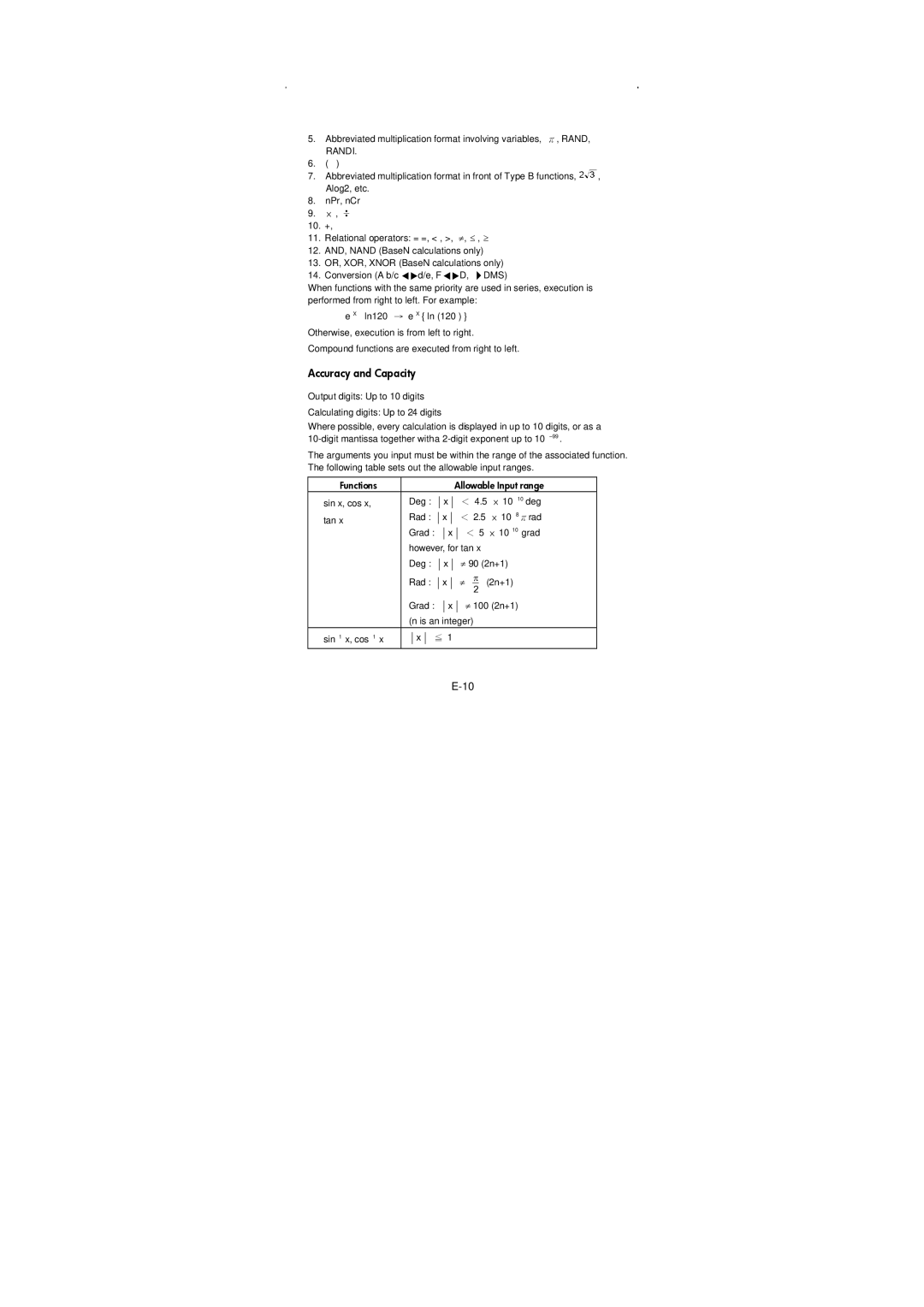5.Abbreviated multiplication format involving variables, π, RAND,
RANDI.
6.( – )
7.Abbreviated multiplication format in front of Type B functions, ![]() , Alog2, etc.
, Alog2, etc.
8.nPr, nCr
9.× , ![]()
10.+, –
11.Relational operators: = =, < , >, ≠, ≤ , ≥
12.AND, NAND (BaseN calculations only)
13.OR, XOR, XNOR (BaseN calculations only)
14. Conversion (A b/c![]() d/e, F
d/e, F![]() D, DMS)
D, DMS)
When functions with the same priority are used in series, execution is performed from right to left. For example:
e X ln120 → e X { ln (120 ) } Otherwise, execution is from left to right. Compound functions are executed from right to left.
Accuracy and Capacity
Output digits: Up to 10 digits
Calculating digits: Up to 24 digits
Where possible, every calculation is displayed in up to 10 digits, or as a
The arguments you input must be within the range of the associated function. The following table sets out the allowable input ranges.
Functions |
|
|
|
|
|
|
|
|
|
|
|
| Allowable Input range | |
sin x, cos x, | Deg : |
| x |
| < 4.5 × 10 10 deg | |||||||||
|
| |||||||||||||
tan x | Rad : |
|
|
| x |
|
| < 2.5 × 10 8πrad | ||||||
|
|
| ||||||||||||
| Grad : |
|
| x |
| < 5 × 10 10 grad | ||||||||
|
|
|
| |||||||||||
| however, for tan x | |||||||||||||
| Deg : |
| x |
| ≠ 90 (2n+1) | |||||||||
|
|
| ||||||||||||
| Rad : |
|
|
| x |
|
|
|
| π | ||||
|
|
|
|
|
| ≠ | 2 (2n+1) | |||||||
|
|
|
|
|
|
|
|
|
|
|
|
|
| |
| Grad : |
|
| x |
| ≠ 100 (2n+1) | ||||||||
| (n is an integer) | |||||||||||||
sin |
| x |
| ≦ 1 |
|
| ||||||||
|
|
|
| |||||||||||
|
|
|
|
|
|
|
|
|
|
|
|
|
|
|
